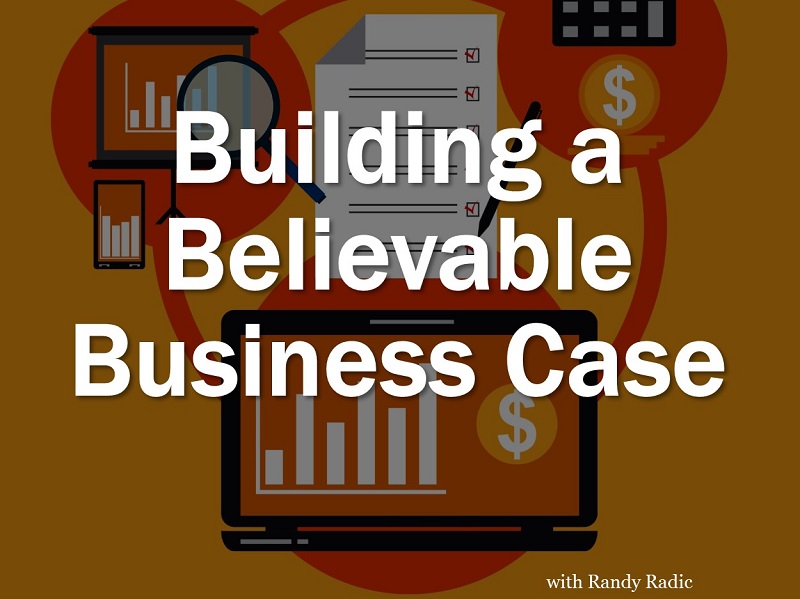In this episode, Randy Radic shares his process and tips for building a realistic business case to make sure your organization is moving forward with the right initiatives.
After listening to this episode, you'll understand:
- The key components to a meaningful business case
- How to make your business case more believable
- What’s different about business cases in Agile
- How to find often overlooked costs to make your business case more reliable
Show Notes
In simple terms, a business case is the justification to undertake a project, program, or initiative. It clearly spells out the benefits, what it’s going to cost, and what the return on the investment is.
A business case provides insight as to whether or not your organization should undertake an initiative.
Steps in Building a Believable Business Case
To create a business case with appropriate stakeholder and sponsor buy-in, start with the benefits. From there, you can determine the cost and calculate return on investment.
Start discussions with stakeholders to build a consensus around benefits. Get clarity around the problem or opportunity and expected benefits of the solution. Do this before discussion the system functions needed to achieve those benefits.
Once you have consensus about the benefits, look at the technology, process, and people changes needed. This leads you to the cost component of the business case.
The Benefits
Often, sponsors don’t believe business cases because the benefits are unrealistic. There are three categories of benefits.
With for-profit organizations, either the organization will increase revenue, reduce cost, or meet some regulation that they’re not currently fulfilling. There are also other nontangible factors to consider such as brand and reputational risk.
Often, those soft benefits can be quantified through discussions with stakeholders. If you are unable to quantify soft benefits, you should still note them in your business case.
One important thing to do is to be realistic about when the benefits will be realized.
The Costs
Once the benefits are understood and agreed upon, you need to identify the associated costs.
One way to define the cost associated with the initiative is to hold a workshop to identify potential solutions and understand the cost with each proposed solution. That includes developing an understanding of the features that will enable the desired benefits and the technology, people, and process changes needed.
For technology, you may need to consider options such as build versus buy and include licensing cost, hardware, labor to build or modify the software, facility cost, ongoing maintenance, etc.
Listen to the full episode to discover often overlooked costs you should consider, how to get the most accurate effort estimates, what kind or return calculations to use, and how business cases differ in Agile environments.
Your Homework
If you’re working on a technology project, think about what needs to change in terms of people and process, not just technology.
Links mentioned in this episode:
- Online Business Systems website: OBSglobal.com
- Win tickets to BA World Chicago 2017

Randy Radic
Sr. Consultant at Online Business Systems
Randy is a Senior IT / Business practitioner with over 20 years of IT project portfolio management, enterprise business analysis, and business transformation experience with major corporations in private and the public sectors in Canada and US. His industry experience includes consulting, oil and gas, telecommunications, insurance, and government.
Thank you for listening to the program
To get more valuable content to enhance your skills and advance your career, you can subscribe on iTunes and other podcatchers.
Also, reviews on iTunes are highly appreciated! I read each review and it helps keep me motivated to continue to bring you valuable content each week.







